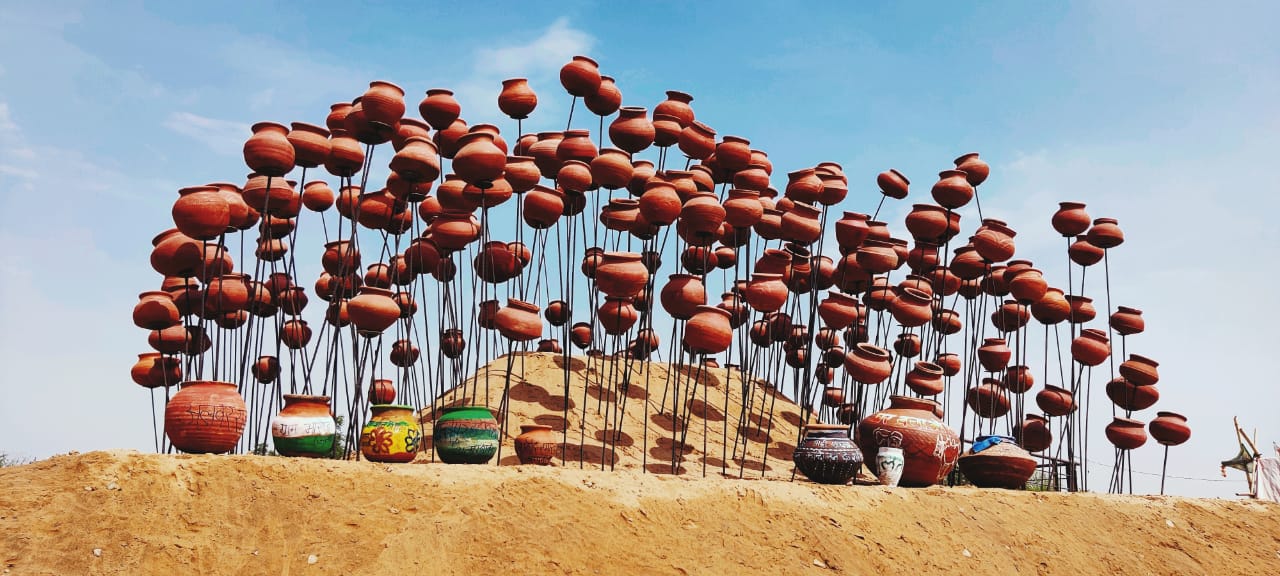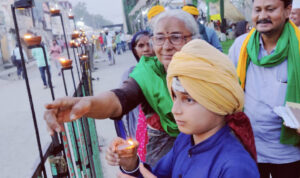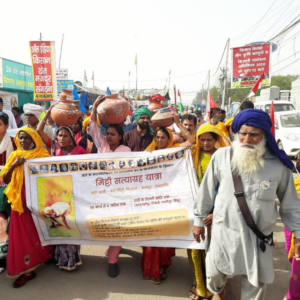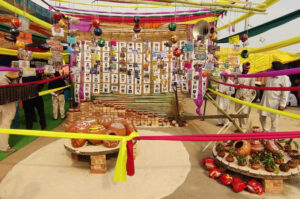Mitti Satyagraha: Retracing Gandhi’s peaceful battles

Soil from hundreds of villages across India was collected and sent to Delhi in the Mitti Satyagraha march
“In 1930, when Mahatma Gandhi had decided to launch the salt satyagraha in Dandi to get the government to remove ban on domestic salt production and end its monopoly on salt, not many were convinced about the utility of a non-violent protest march passing through villages. But now, we all know the key place that the Dandi March has in Indian independence movement and the effectiveness of nationwide non-violent protests that were launched by Gandhi throughout the freedom struggle,” says social activist Medha Patkar.
Patkar says that in the past 35 years since the Narmada Valley protest began against construction of the Sardar Sarovar dam, she has also been mounting peaceful satyagrahas which have proven very effective. “Whatever we have achieved so far, be it resettlement of dam-affected people in Narmada Valley or tribal’s land rights or now the farmers’ protest movement, it has all been through a peaceful protest, following the example laid down by Gandhi,” says Patkar.
“And now, our own mitti satyagraha or soil protest has been inspired from Gandhi’s actions as today once again the government ruling India has launched an attack on land rights of a wide variety of communities across the nation. Be it the farmers, tribals or any other community whose land is faced with threat from the government or big business,” Patkar tells Media India Group.
After covering the states of Maharashtra, Gujarat, Madhya Pradesh, Rajasthan, Haryana and Punjab, the core team of Mitti Satyagraha participants led by Patkar reached the borders of Delhi on April 5 where over two days several events were organised at the protest sites of the farmers who have been gathered since last November at various borders of the national capital against the farm laws brought in by the government.
As part of the protest, multiple marches were also independently organised from Mumbai, Badwani and Rewa in Madhya Pradesh, Champaran in Bihar, Bhubaneswar in Odisha, Varanasi in Uttar Pradesh, Bellary in Karnataka and Amritsar in Punjab. “These fistfuls of soil has come from across the country. This soil is not of corporates,” activist Syeda Hameed and Shabnam Hashmi said at a press conference in New Delhi.
Patkar says that the response to the protest was unexpected as people from thousands of villagers across the entire nation joined the movement. “Despite all attempts by the government to stop our march and prevent people from joining in, at a local level, thousands of people turned up in support of the march in so many states,” she says.
She adds that the march was not seen simply in support of farmers, but practically everyone in the country who is connected with land and who faces the threat of that land or livelihood coming from the land being snatched away by big businesses or the government, in the name of development.
“That’s why people from different communities and different groups welcomed the march and participated. So many people in the country are connected with soil and they all are part of this protest. We had support from tribals whose forests and livelihood resources are under rising threat from companies or people who are displaced from their lands due to big projects like dams or roads. There are of course also the farmers. So nearly everyone got the message of how closely they are linked to and dependent upon the land or soil of the nation,” says Patkar.
Thus, people from all over the nation sent soil from their village to be part of the national memorial that would be built at the Singhu protest site in honour of over 350 farmers who have died in the farmers’ movement. Another memorial is also being built at Tikri border of Delhi where farmers led by Joginder Singh Ugrahan of BKU (Ugrahan) have been protesting. A makeshift memorial at the site was erected by Shabnam Hashmi and other leaders.
“These people from different parts of the country have sacrificed their lives for all the Indian farmers. The martyr farmers’ memorial will be made by using soil from all over the country,” says Comrade Satyawan Singh, national president of AIKMS.
“Farming happens on land and the soil symbolises mother Earth, so in order to save our soil and our land, we gathered soil from all over the country to symbolise that farmers from all over India are in this protest together. Soil is also symbolic that the pride of crony capitalists and the government would be shattered once this protest succeeds. And lastly, of course, all of us will go back to this soil one day,” says Singh. He says that several other activities have been planned over the next few weeks. One is a planned march from Kanyakumari to Delhi, but that had to be postponed due to the spike in coronavirus in Maharashtra.
Patkar says that as people’s movements in the country become stronger, they need new symbols and this Mitti Satyagraha is one such symbol.












